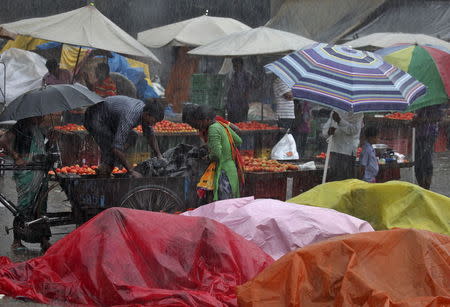Monsoon starts withdrawing from northwest region - weather office

MUMBAI (Reuters) - India's June-September monsoon has started withdrawing from the north-western region, the weather department said on Friday, which could increase the rainfall deficit for the season. The monsoon usually starts withdrawing in the first week of September. "The southwest monsoon has withdrawn from western parts of Rajasthan," the weather department said. The conditions are favourable for further withdrawal of the monsoon from northwest India in the next three-four days, it said. The July-September rains irrigate nearly half of India's farmlands, bringing relief to millions of poor farmers who till small plots of land to sustain their families. The country has so far received 13 percent lower rainfall than normal in the current monsoon season. Though rainfall was scanty last year too, a late surge delayed the retreat by about 15 days and left enough moisture for farmers to start planting wheat and rapeseed from October. (Reporting by Rajendra Jadhav; Editing by Subhranshu Sahu)

 Yahoo Finance
Yahoo Finance 